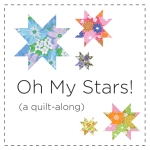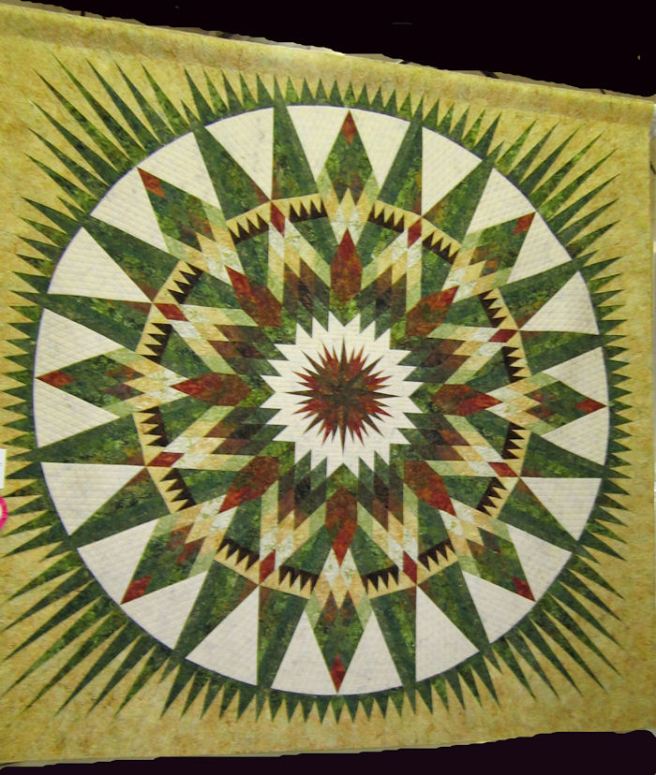Entering a Juried Quilt Show
Entering quilt shows has been a hot topic on the internet on several blogs, e-magazines and pod casts. I have been following the discussion because I had been considering entering the AQS QUILT SHOW in Grand Rapids this summer ( or 2013 or 2014.) What better opportunity then to enter one of the big shows in my home state. I have investigated what standards the quilts are judge upon and want to take the plunge. To that end here is the information I have discovered for my guild sisters who might also want to enter one of the larger quilt shows.
( Deadline for entry is April 30, 2012) Below I have posted links the AQS show in Grand Rapids. Be sure to register as soon as possible in order to get your entry instructions.)
Important information:
Be sure to observe all deadlines. Early entries are permissible and encouraged. Quilts submitted after the deadlines are dismissed out of hand, regardless of how beautiful your quilt is. Be sure to follow any instructions about submission for a particular category or group. Read the rules and regulations carefully and follow them.
Follow the rules for the type of photographs required. For the national quilt shows a professional photograph might be desirable. MOST quilt shows will not accept photographs that have been edited in any manner. Following the directions be prepared to submit a head on shot of yourself, a picture of the entire quilt, details of the quilting and close ups of the important details of the quilt. Most photographs are to be submitted in digital format ( CD) but some places still require slides. You must submit the photographs in the format they request.
The rules for the quilt show are set by the hosting organization and will change from show to show. The national shows usually have certified judges, judges who will judge the quilt based on predetermined standards. Judges can be trained and certified by the National Quilting Association, or they can be trained through experience. They all adhere to similar standards of judging, although final results will be varied based on the individuals. There are several method of tallying the points for judging the quilt and the hosting organization will determine what criteria is used. It is usually spelled out in the quilt entry form. Quilts are judged individually then against other quilts in their category and classifications. Best of show quilts are the most perfect quilts with the best workmanship and design elements in the show.
What is important to remember is that having your quilts judged is to improve your techniques for the next quilt, to learn from the judge’s comments. Do not take comments personally but use them as a springboard for improving your workmanship.
What criteria are used for JUDGING A QUILT?
Design / Technique/ Workmanship / Presentation
Presentation:
In her podcast Annie Smith stresses the importance of having your quilt “SHOW READY”. Many beautiful quilts have been knocked out of completion because of pet hair, lint, stains, and odors. Be sure all threads are buried and none are left dangling from construction. All marking should be removed. BE SURE YOUR QUILT IS IMPECCABLY CLEAN.
WORKMANSHIP:
Technique:
For the most part like quilts are judged against each other in their respective categories. It is important to read the rules carefully and enter your quilt in the correct category. What-ever technique you chose it should the best workmanship that you can achieve. Again no dangling threads, applique should be well stitched with invisible stitches. Pieced blocks should have points not cut off or into the seam allowance.
Pay attention to the basics of construction and do the absolute best that you can.
Over all look of the quilt and the impact it has on viewers is important.
Does it hang straight? Are the edges straight and plumb?
Does the quilt lie flat?
DO the borders wave?
Precision of seam allowance is examined.
Are points cut off are they lost into seam allowance?
Threads not buried but hanging off the quilt
Quilting details, regardless of what type of quilting (Hand, domestic or long-arm.) Is it consistent type of quilting being used. Are the stitches even, standard in size and shape? Was the quilting by an individual, a group or professional long arm quilter. (Credit must be given to whoever did the quilting.)
Hand quilting (stitches even size on front and back of quilt, starts and stops not visible, quilt marking lines not visible.)
Machine Quilting (domestic or long armed) is examined for correct tension, thread dots on back of quilt. They look for the starts and stops and the expertise of the back tracts. Thread nests are especially frowned upon.
Does the stitch in the ditch come out of the ditch? More and more shows are judging the quilting against the same type of quilts. (Hand against hand, domestic against domestic and long arm against long arm.) The judges realize different skill sets are required for the different types of quilting.
The binding is especially important. Are the thread hanging, missed stitches gaps in the stitching? Are there any parts where the binding is empty or weak? Are the corners sewn closed on top and bottom? Is the size of the binding uniform; is there any pulling to the back to cover the stitches attaching the binding? Stitches that attach the binding to the quilt should not be seen, but covered by the binding. No batting should be poking through.
DESIGN ELEMENT OF JUDGING:
• Visual impact of design – The quilt must be visible across the room! It needs to be eye-catching
• Originality and creativity
• Color and value
• Balance and integration of design (scale, relationship and arrangement of quilt components including borders)
• Overall appearance (quilt is clean, free of odor, and hangs squarely)
• General construction – workmanship (piecing, applique, borders even)
• Level of difficulty
• Special techniques (if applicable)
• Machine quilting (stitches of even length, no tension problems – Bobbin thread should not show on top and top thread should not show on back. Starts and stops not visible.)
• Quilting design appropriate to quilt top, density of quilting consistent
• Finishing (binding applied securely, evenly and accurately, square corners – no dog ears)
Art Quilts are judged on their merits …
There are more shows being established just for the art quilts. The impact of the design, the artistic expression, composition and all the rules of art are most important for these quilts. That said, technique is still considered to be important part of the judging of these quilts.
Embellishments adhered correctly and are secure
Subjects not taken into consideration and judges try not to allow their own biases and preferences sway them.
Creativity
Color
Harmonious design
Technical skills are judged
Sources:
http://aqsshows.com/AQSGrandRapids/.. REGISTRATION, CLASSES
http://aqsshows.com/AQSGrandRapids/contests …Contests and Deadlines
*****
Annie Smith, Quilting Stash blog and podcast
http://simplearts.com Podcast 209-210 and 211
*****
Quilt Judging
http://www.bukisa.com/articles/348120_criteria-used-in-judging-quilt-contests …. Criteria used in judging a quilt

































